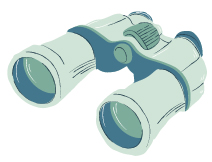
The type of binoculars you need depends on the specific activity you plan to engage in. Here are some common activities and the corresponding binocular recommendations:
 Marine/Boating:
Marine/Boating: 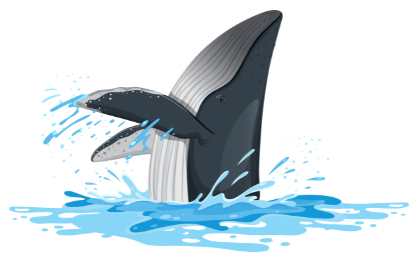
Marine binoculars are often designed to be waterproof and fogproof to prevent damaging the optics when being used on water environments. These usually have magnification values between 7x and 10x, with objective lens diameters ranging from 25mm to 50mm to give you a larger field of view and a more stable image.
 Birdwatching:
Birdwatching: 
For birdwatching, you'll want binoculars with good magnification and a wide field of view. Opt for models with magnifications between 7x and 10x and an objective lens diameter of 30mm to 42mm. Consider lightweight and compact designs for ease of use during long periods of observation.
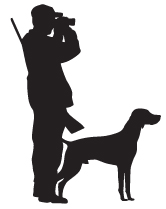 Hunting:
Hunting: 
Binoculars for hunting require durability, good low-light performance, and a balance between magnification and field of view. Opt for models with magnifications between 8x and 10x and objective lens diameters ranging from 42mm to 50mm. Look for features like waterproofing and fog-proofing for outdoor use.
 Astronomy:
Astronomy: 
When stargazing or observing celestial objects, high magnification is crucial. Look for binoculars with magnifications of 10x or higher and a large objective lens diameter, preferably 50mm or more. Larger objective lenses gather more light, enhancing image brightness and clarity.
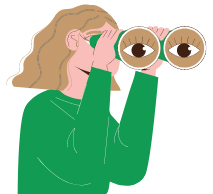 Sports Events:
Sports Events: 
For viewing sports events, consider binoculars with moderate magnification and a wide field of view. A magnification range of 7x to 10x with an objective lens diameter of 25mm to 42mm should suffice. Compact and lightweight designs are ideal for portability.
 Traveling/Sightseeing:
Traveling/Sightseeing: 
When traveling or sightseeing, versatility and portability are essential. Opt for compact binoculars with lower magnification (around 8x) and a wide field of view. Look for lightweight models that can easily fit into your bag or pocket for convenient use on the go.
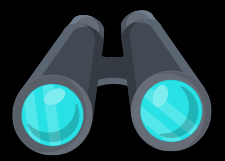 Night Vision:
Night Vision: 
Similar to regular binoculars you need to choose a magnification and objective lens size based on the activity you need the binoculars for, but there are some other factors you should think about: Power source (if the batteries are rechargeable or disposable), the Generation (The higher the generation, the better the performance, but also the higher the cost), and the Infrared Illumination (If IR Illumination is built-in or if it allows you to attach externally for improved performance).
Remember to consider factors like your budget, personal preferences, and any specific requirements for the activity you have in mind. It's also helpful to try out binoculars in person, if possible, to determine which model feels comfortable and suits your needs best.
Binocular Terms & Definitions
Monoculars:
Monoculars are single eyepiece optical devices used for magnifying distant objects. They are similar in function to one half of a binocular, providing a compact and portable solution for observing and magnifying objects that are far away. Monoculars are commonly used for a variety of outdoor activities, including birdwatching, hiking, hunting, and sports events, as well as for indoor uses like viewing performances and concerts.
Compact Binoculars:
These are small and lightweight binoculars, ideal for casual use, outdoor events, and traveling. They are easily portable and fit well in pockets or bags.
Full-Size Binoculars:
These are larger and offer better light-gathering capabilities, making them suitable for activities like birdwatching, stargazing, or other situations where image clarity and brightness are crucial.
Zoom Binoculars:
Also known as variable magnification binoculars, these allow you to adjust the magnification level, offering versatility in observing objects at different distances.
Wide-Angle Binoculars:
These provide a wider field of view, making them great for observing landscapes, fast-moving subjects, or sporting events.
Digital Camera Binoculars:
These binoculars have built-in digital cameras, allowing you to capture photos and videos of what you're observing.
Rangefinder Binoculars:
These combine binocular functionality with laser rangefinders, allowing you to measure the distance to an object accurately.
Compact Zoom Binoculars:
These offer both compactness and adjustable magnification, making them versatile for a variety of activities.
Prism Types:
Roof Prism Binoculars: Roof prism binoculars are a type of optical instrument used for magnifying distant objects. They are commonly used for activities like birdwatching, stargazing, sports events, and more. Unlike traditional Porro prism binoculars, which have an offset design, roof prism binoculars have a more compact and straight-line design due to the arrangement of their prisms.
Porro Prism Binoculars: Porro prism binoculars are a type of optical instrument used for magnifying distant objects. They are named after their inventor, Ignazio Porro. These binoculars have an offset design where the objective lenses and the eyepieces are not in a straight line, resulting in a more traditional and distinctive shape compared to roof prism binoculars.
Prism Material:
Prism is made of the crown glass with a high refraction rate, such as borosilicate crown, "BK," and barium crown, "BaK".
BK7: The material for general types of prisms.
BaK4: The material for the highest class of prisms which has an excellent optical function. It produces an image without any blur even near the edges.
SK15: The material for high quality prisms which yield outstanding optical performance. It has higher refractive index than BaK4 and produces extremely clear and sharp edge-to-edge image without loss of light as a result.
Lens Material:
ED Lens: ED (Extra Low Dispersion) glass is used in this special lens, and a sharp image with few colouring blots is produced.
Lens Types:
Aspherical Lens: It corrects the curvature aberration created around the edge of a field of view, and a sharp field of view with few distortion is created.
Objective Lens Effective Diameter:
Object Lens is the lens that is placed closest to the object to view, and the effective diameter is the diameter of this lens. The larger the number, the higher the light gathering power, and the binoculars / field scopes with superior resolution are produced. In addition, the size of the body becomes large as the effective diameter becomes large.
Field Scope Types:
45° Inclined Viewing Type: The eyepiece lens is tilted at 45° in the optical tube. It makes it easy to view an object located at a high altitude.
Straight Viewing Type: The optical tube and eyepiece lens are placed on the same axis in this design. It is easy to find an object and to operate when a camera is installed.
Actual Field of View:
It is the field which you can view without moving the binoculars or field scope and is expressed as an angle. The larger the actual field of view, the wider the field which you can view.
Apparent Field of View:
It is the field of view seen when you look in the binoculars and is expressed as an angle.
Apparent Field of View = Actual Field of View x Magnification
Wide Angle:
If the apparent field of view is 65° or wider, it is called a wide-angle type. A wide field of view can be powerful in watching sports games or small birds that are fast moving objects.
Extremely Wide Angle:
If the apparent field of view is 75° or wider, it is called an extremely wide-angle type. It obtains an image of almost an entire starry sky with its very wide field of view.
Field at 1,000m:
The field seen at 1,000m away without moving the binoculars or field scope.
Exit Pupil:
It expresses the diameter of an object lens seen through an eyepiece lens. The larger the exit pupil, the brighter an image.
Exit Pupil = Objective Lens Effective Diameter ÷ Magnification
Brightness:
The Value obtained by squaring an exit pupil is called "Brightness". The large the brightness, the brighter an image.
Eye Relief:
The distance between the eye and the eyepiece lens when the entire field of view is visible when looking in the binoculars. The longer the eye relief, the less stress felt in the eye.
Near Distance:
The shortest distance from the eye to the image of the object focused in binoculars or a field scope. (It differs from person to person).
Magnification:
Binocular magnification refers to the factor by which an object's apparent size is increased when viewed through a pair of binoculars. It is a measure of how much closer an object appears when observed through binoculars compared to when observed with the naked eye.
Waterproof:
It is the design to protect the optical tube from becoming wet even in the rain or snow. It is suitable for outdoor use when the weather is unstable.
Tripod Installation
During long-term observation or when the binoculars with high magnification are used, it is recommended to fix them with a tripod to obtain a stable field of view.
Tripod Can Be Attached: The Bino-Holder is provided for installation of tripod.
Tripod Can Be Attached (MH): A tripod can be installed by using "Bino-Holder MH (Tripod Adapter MH)", which are sold separately.
Tripod Can Be Attached (H) (MH): A tripod can be installed by using "Bino-Holder H (Tripod Adapter H)" or "Bino-Holder MH (Tripod Adapter MH)", which are both sold separately.
Tripod Can Be Attached (V): A tripod can be installed by using "Bino-Holder V", which are sold separately.
Coating:
Various kinds of coatings are applied on lens or prisms. The coating works to reduce the loss of light and to product a bright image. The optical functions are different in different methods or kinds of coating.
Magenta Coating: (Coated Parts = Lens Surface) It reduces the loss of light and produces a bright field of view.
Full Coating: (Coated Parts = All Surface of Lens [Object Lens or Eyepiece Lens]) It reduces the loss of light by large amount.
Multi-Coating: (Coated Parts = Lens or Prism) Multi-Layer coating with more than 3 layers is applied and yields a high contrast in image.
Full Multi-Coating: (Coated Parts = All Over the Surface of Lens [Object Lens or Eyepiece Lens]) Multi-Coating is applied and the bright field of view with a high contrast is produced.
PFM (Perfectly Fully Multi-) Coated: (Coated Parts = All Surfaces of Lens and Prisms [Object Lens or Eyepiece Lens]) Multi-Coating is applied and a high contrast is obtained.
Phase Coating: The Spatial Method of Coating that corrects the aberration in Dach prism. It prevents lens flares and dramatically improves the resolution, producing a high contrast.
H.R.D (High Reflective Dielectric) Coating: This applies to a reflective surface of the subsidiary prisms by dielectric coatings strongly enhancing the reflectivity and produces outstanding crisp image.
Coated Optics vs Coated Lens
In the context of binoculars, the terms "multi-coated optics" and "multi-coated lenses" are often used interchangeably, but they refer to different parts of the binocular's optical system.
Multi-Coated Optics: Multi-coated optics typically refer to the optical system as a whole, including all the lenses and prisms within the binoculars. This means that multiple layers of anti-reflective coatings have been applied to various optical elements throughout the binoculars, such as the objective lenses, ocular lenses, and prisms. These coatings are designed to reduce reflections and glare, improve light transmission, and enhance image quality by allowing more light to pass through the optical system while minimizing the loss of light due to reflections.
Multi-Coated Lenses: Multi-coated lenses, on the other hand, specifically refer to the lens elements within the binoculars, such as the objective lenses and ocular lenses. These lenses have multiple layers of anti-reflective coatings applied to their surfaces. The purpose of multi-coated lenses is the same as multi-coated optics: to minimize reflections, increase light transmission, and improve image clarity and brightness.
